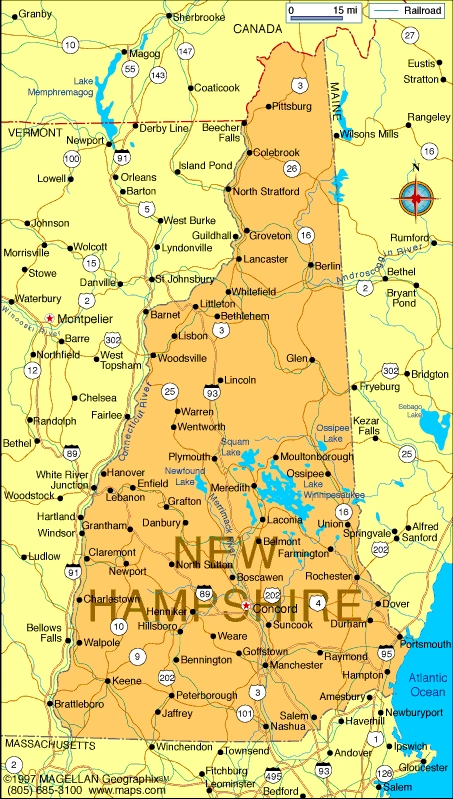New Hampshire - Facts and Figures.
Publié le 10/05/2013
Extrait du document


«
Native Hawaiians and other Pacific Islanders less than 0.1 percent (2000) Mixed heritage or not reporting 1.7 percent (2000) Hispanics (of any race) 1.7 percent (2000) HEALTH AND EDUCATIONLife expectancy 76.7 years (1989-1991) Infant mortality rate 5 deaths per 1,000 live births (2004) Residents per physician 380 people (2005) Residents per hospital bed 467 people (2005) Share of population not covered by health insurance 11.5 percent (2006) Number of students per teacher (K-12) 13.7 (2003) Government spending per student (K-12) $9,802 (2002-2003) Share of students attending private school 11.3 percent (1999) Share of people over age 25 with high school diploma 89.9 percent (2006) GOVERNMENTState governmentGovernor John Lynch (term ends January 2009) Legislature Senate, 24 members House of Representatives, 400 members National representationMembers of the U.S.
Senate 2 Members of the U.S.
House of Representatives 2 Electoral votes 4 ECONOMYGross state product (GSP) $56 billion (2006) Income per capita $36,676 (2004) GSP by economic sectorAgriculture, forestry, and fishing 0.4 percent (2004) IndustryConstruction 5.5 percent (2004) Manufacturing 12.5 percent (2004) Mining 0.1 percent (2004) Transportation and utilities 5.2 percent (2004) ServicesFinance, insurance, and real estate 22.4 percent (2004) Government 9.1 percent (2004) Information technology 3 percent (2004).
»
↓↓↓ APERÇU DU DOCUMENT ↓↓↓
Liens utiles
- New Brunswick - Facts and Figures.
- New Jersey - Facts and Figures.
- New Mexico - Facts and Figures.
- New York - Facts and Figures.
- Papua New Guinea Facts and Figures.

































